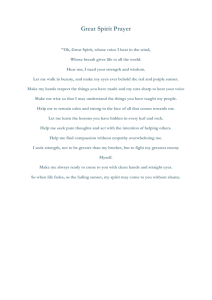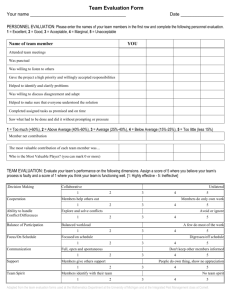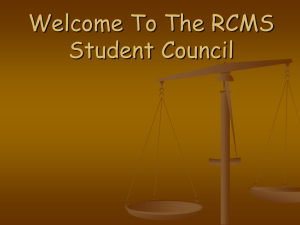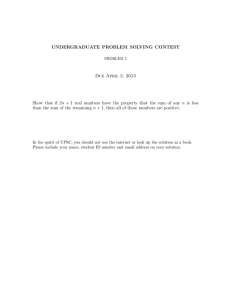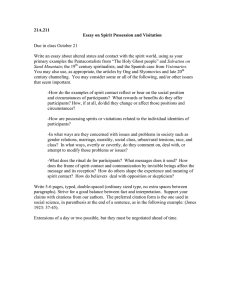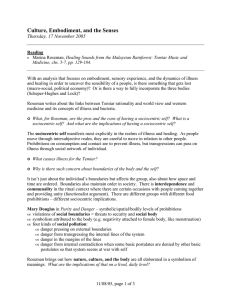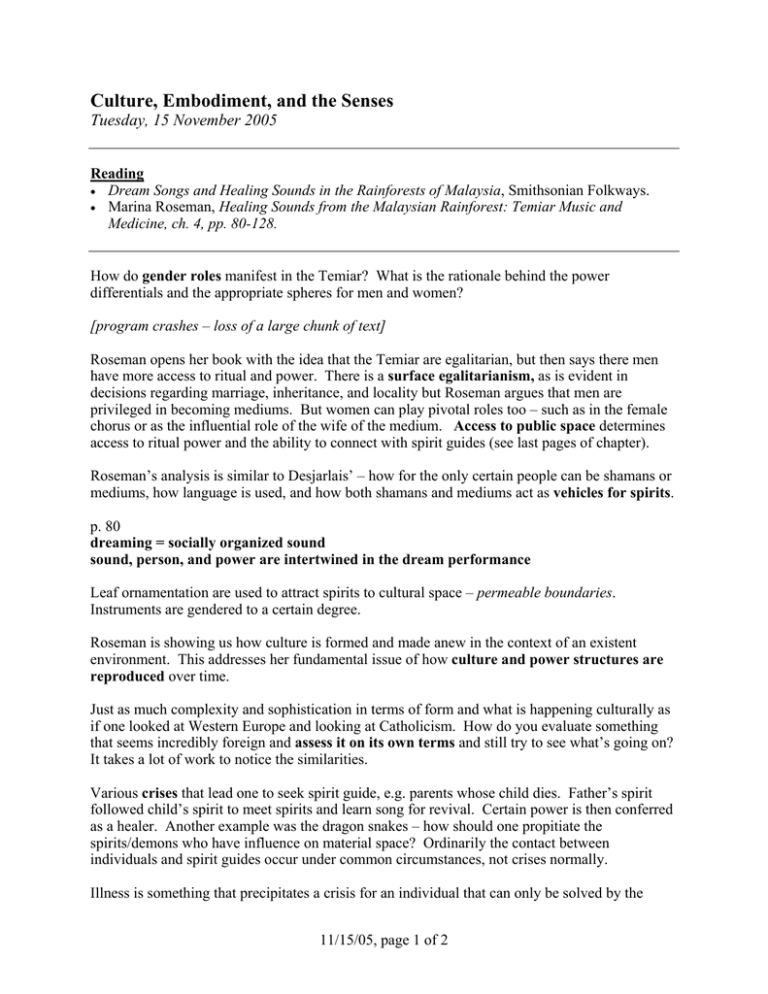
Culture, Embodiment, and the Senses
Tuesday, 15 November 2005
Reading
• Dream Songs and Healing Sounds in the Rainforests of Malaysia, Smithsonian Folkways.
• Marina Roseman, Healing Sounds from the Malaysian Rainforest: Temiar Music and
Medicine, ch. 4, pp. 80-128.
How do gender roles manifest in the Temiar? What is the rationale behind the power
differentials and the appropriate spheres for men and women?
[program crashes – loss of a large chunk of text]
Roseman opens her book with the idea that the Temiar are egalitarian, but then says there men
have more access to ritual and power. There is a surface egalitarianism, as is evident in
decisions regarding marriage, inheritance, and locality but Roseman argues that men are
privileged in becoming mediums. But women can play pivotal roles too – such as in the female
chorus or as the influential role of the wife of the medium. Access to public space determines
access to ritual power and the ability to connect with spirit guides (see last pages of chapter).
Roseman’s analysis is similar to Desjarlais’ – how for the only certain people can be shamans or
mediums, how language is used, and how both shamans and mediums act as vehicles for spirits.
p. 80
dreaming = socially organized sound
sound, person, and power are intertwined in the dream performance
Leaf ornamentation are used to attract spirits to cultural space – permeable boundaries.
Instruments are gendered to a certain degree.
Roseman is showing us how culture is formed and made anew in the context of an existent
environment. This addresses her fundamental issue of how culture and power structures are
reproduced over time.
Just as much complexity and sophistication in terms of form and what is happening culturally as
if one looked at Western Europe and looking at Catholicism. How do you evaluate something
that seems incredibly foreign and assess it on its own terms and still try to see what’s going on?
It takes a lot of work to notice the similarities.
Various crises that lead one to seek spirit guide, e.g. parents whose child dies. Father’s spirit
followed child’s spirit to meet spirits and learn song for revival. Certain power is then conferred
as a healer. Another example was the dragon snakes – how should one propitiate the
spirits/demons who have influence on material space? Ordinarily the contact between
individuals and spirit guides occur under common circumstances, not crises normally.
Illness is something that precipitates a crisis for an individual that can only be solved by the
11/15/05, page 1 of 2
individual becoming a shaman him/herself.
W similar to Haiti and possession
W Haitian psychiatrist Louis Mars said that the are other ways to interpret bodily manifestation
There is the sense that mental illness can result from an external spirit.
W What about the psychotic episode that was cured by Malay and not Temiar ritual?
Theoretical point: in the ritual performance, the participants are dealing with a “circle of
meanings” that are oriented towards sound, p. 106 – sound as an ordering force in society.
Who can use certain instruments? Who can use what sounds and what times?
For the Temiar, every entity (humans, plants, etc.) has a consciousness that can approach us and
teach us, bestowing information how to heal and perform ceremonies that can affect others’
lives, similar to Catholicism and supplication to saints but this is not entirely the same as walking
through space and everything has a consciousness that can communicate with and affect you.
There are sexual overtones to the relationship between the medium and the spirit guide. The
inversions and transformations that occur during the performances also indicate that a certain
amount of desire/fantasy play a part in that role. Symbolic inversions are a form of leveling in
society...
Roseman brings up theory of Bakhtin (who worked on carnival) and Turner (who also worked on
carnival as well as liminality). Carnival = social restrictions get relaxed, people loosened, social
structure temporarily overturned, people coming together as they normally would not.
Liminality = space outside normal time, normal expectations of behavior. Some theorize that
the function of carnival is to help release social tensions that have built up because of social
inequities that have been building up – there is a ritualized release and people can then go back
to the status quo, no real revolution or permanent change (but not impossible). There is a
creation of space out of the mundane normality that allows for inversions to address the
inequalities in society.
|
To what extent are people reproducing their own lack of agency?
11/15/05, page 2 of 2

